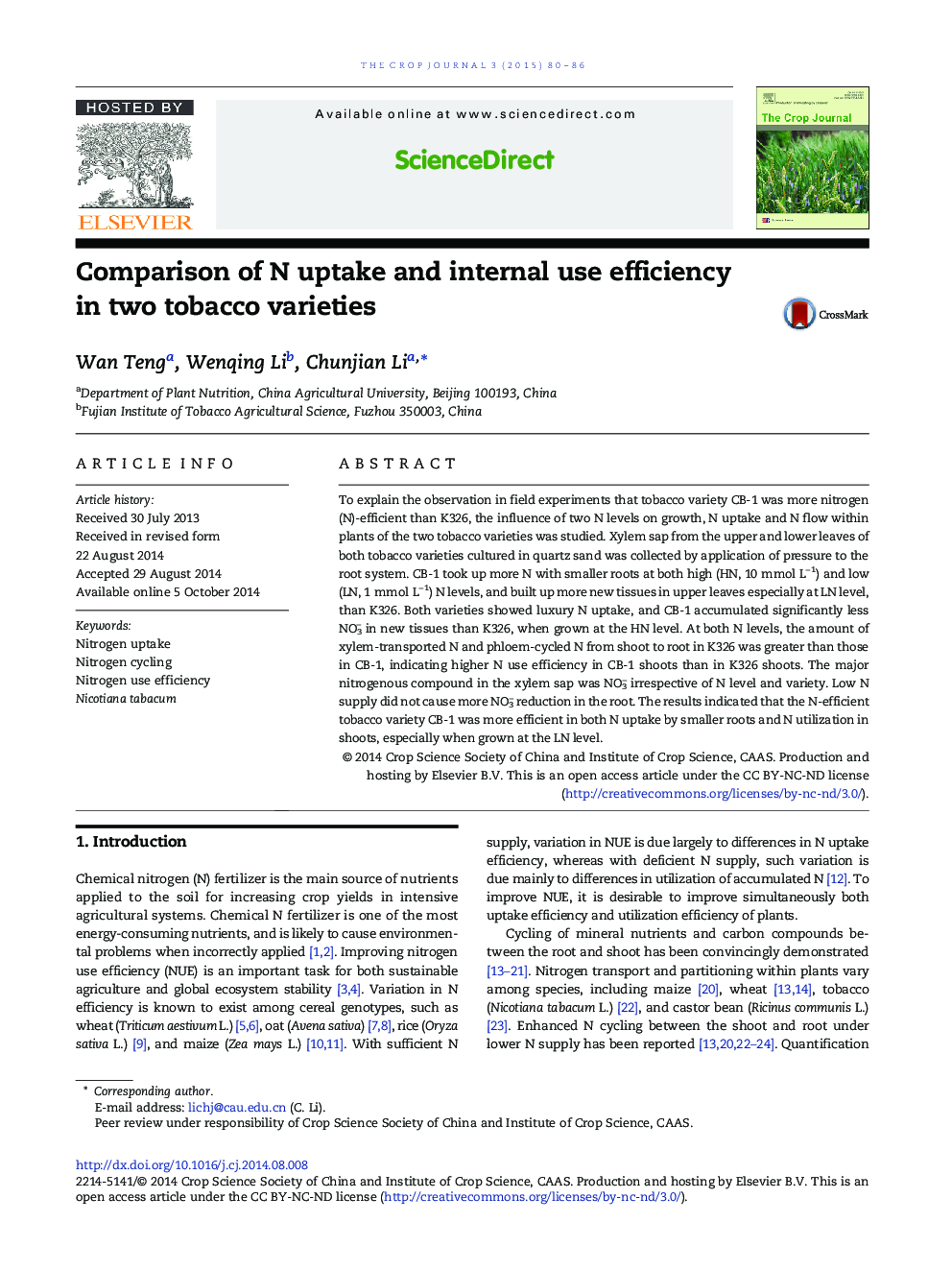| Article ID | Journal | Published Year | Pages | File Type |
|---|---|---|---|---|
| 2079503 | The Crop Journal | 2015 | 7 Pages |
To explain the observation in field experiments that tobacco variety CB-1 was more nitrogen (N)-efficient than K326, the influence of two N levels on growth, N uptake and N flow within plants of the two tobacco varieties was studied. Xylem sap from the upper and lower leaves of both tobacco varieties cultured in quartz sand was collected by application of pressure to the root system. CB-1 took up more N with smaller roots at both high (HN, 10 mmol L− 1) and low (LN, 1 mmol L− 1) N levels, and built up more new tissues in upper leaves especially at LN level, than K326. Both varieties showed luxury N uptake, and CB-1 accumulated significantly less NO3− in new tissues than K326, when grown at the HN level. At both N levels, the amount of xylem-transported N and phloem-cycled N from shoot to root in K326 was greater than those in CB-1, indicating higher N use efficiency in CB-1 shoots than in K326 shoots. The major nitrogenous compound in the xylem sap was NO3− irrespective of N level and variety. Low N supply did not cause more NO3− reduction in the root. The results indicated that the N-efficient tobacco variety CB-1 was more efficient in both N uptake by smaller roots and N utilization in shoots, especially when grown at the LN level.
